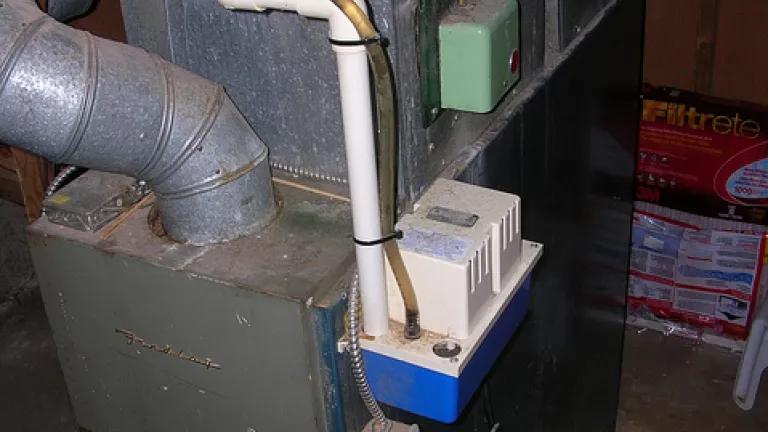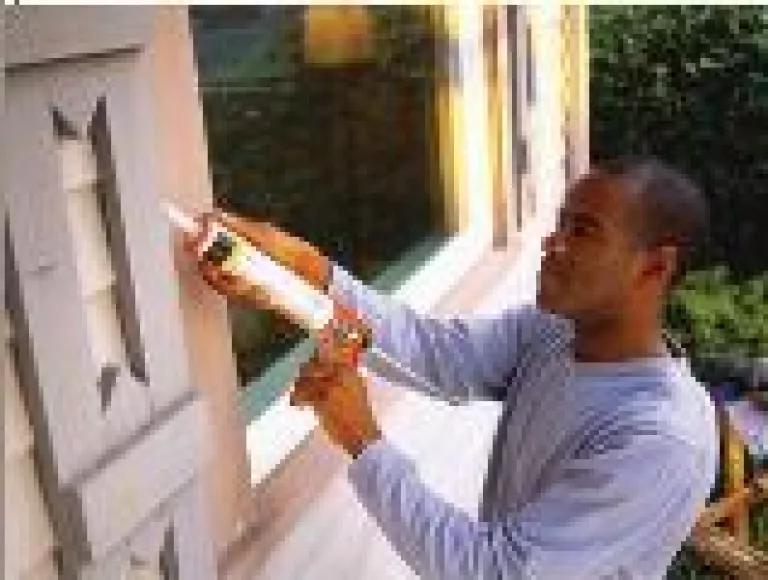
Although terms like “polar vortex” are becoming part of America’s winter vocabulary, there are easy ways to cut energy waste to make sure our utility bills don’t skyrocket as the temperatures plummet.
Keep in mind that heating accounts for a whopping 40 percent of the average home energy use, so consumers can quickly see the effects of energy waste right away on their heating bills. Although relatively simple fixes in managing temperature, regulating humidity, changing filters, and sealing air gaps can produce measurable results, the discussion of winter energy efficiency at home has to begin with the furnace.
Unfortunately, government efficiency standards for furnaces haven’t been updated in a meaningful way since they were first written in 1987. The technology of energy efficiency was in its infancy then, so the humble home furnace hasn’t gotten the same big energy-savings revamp as appliances like refrigerators and dishwashers. A new Department of Energy (DOE) standard that would have substantially increased furnace efficiency has been put on hold pending a legal challenge by industry, but we hope and expect that DOE will either move forward with this money-saving energy efficiency standard or with an even stronger one before too long.
Still, there have been improvements in efficiency simply because consumers have demanded them. If this tough, cold winter has consumers considering the pur
chase of a new furnace, Step No. 1 is to look for units with an ENERGY STAR® label to improve efficiency and to lower heating bills. These high-efficiency furnaces have a rating of at least 90 AFUE or higher. AFUE stands for annual fuel utilization efficiency and a 90 AFUE furnace means that the furnace is 90% efficient -- for 100 units of energy input, the furnace produces 90 units of heat output.
Meanwhile, the government is making some strides on related furnace efficiency issues. In October, the Department of Energy issued a proposed rule on energy efficiency standards for furnace fans, which push warmed air to circulate through a home in winter and move chilled air in a central air conditioning system. The initiative would reduce their energy use by 40 percent, saving the average household about $400 over the life of the fan. Over 30 years, U.S. consumers could save at least hundreds of billions of dollars in lower energy bills and several billion more in avoided air pollution costs.
If furnace replacement isn’t an option, one small task will immediately improve its performance – change the filter. Check it every month, especially during heavy use months in winter and summer and if it looks dirty, replace it. A dirty filter slows the air flow and makes the system work harder, wasting energy.
Here are some other easy ways to cut energy waste in winter:
1. Use a programmable thermostat. These devices cycle off your heating system when no one is home and dial back up before the occupants return. It’s an investment up front, around $100, but over the years, this simple tool can carry much of the energy-efficiency load in your home, cutting heating and cooling costs by 20 to 30 percent. The thermostat settings should reflect the occupants’ usual schedule but if it varies, the settings can be overridden for a day without losing them. More ideas are available from NRDC’s Noah Horowitz.
2. Regulate humidity. The more humidity in a room, the warmer it feels. A room temperature of 70 degrees combined with humidity of 10 percent feels only like 64 degrees but 80 percent humidity makes it feel like 71. Use a humidifier to fight dry air, use less heat, and still feel warm. But don’t go overboard: Dust mites, mold, and mildew thrive in humidity. Be sure to have an indoor humidity gauge, and keep the range between 30 percent and 40 percent. Follow the humidifier’s cleaning instructions to deter mold and bacteria growth. Learn more in our Furnace Q and A.
3. Plug the gaps. Make sure you’ve fixed any big air leaks in your house and duct system. Cutting heat loss may mean you can buy a smaller new furnace, too. Check for drafts around your house and seal them with caulk or putty. Expanding foam sealant can fill larger areas protected from moisture and sunlight. Add weather-stripping around the edges of doors. Attic insulation can be installed in a few hours with batts or rolls. Insulate heating ducts. Winter is a good time for an energy audit. Our Stay Warm page has more great tips.

er those windows. About a third of a home’s total heat loss usually comes through windows and doors. You don’t have to replace windows; you can seal and insulate around them, then add heavier drapes. But cold days can also prod you to do the homework necessary to plan to replace your old windows. Look for National Fenestration Rating Council-rated units. The U-factor measures how much heat can escape. The solar-heat gain coefficient rating measures how much heat from sunshine is transmitted through a window. At Energy Out The Window?, you’ll find more information.
5. Mind the water heater. It’s hard to remember that water heaters need attention, too. Dialing back the setting from 140 degrees to 120 degrees will save money and still give you hot water. If you’re going to be away for a few days, lower the setting even more. But if it’s time to replace the water heater, and you have gas heat, it’s worth looking at ENERGY STAR-rated appliances as they can trim energy use by 50 percent. The ENERGY STAR site lists a lot of efficient options, including whole-home tankless heaters and heat-pump options. More ideas about appliances are available at NRDC’s Smarter Living page.